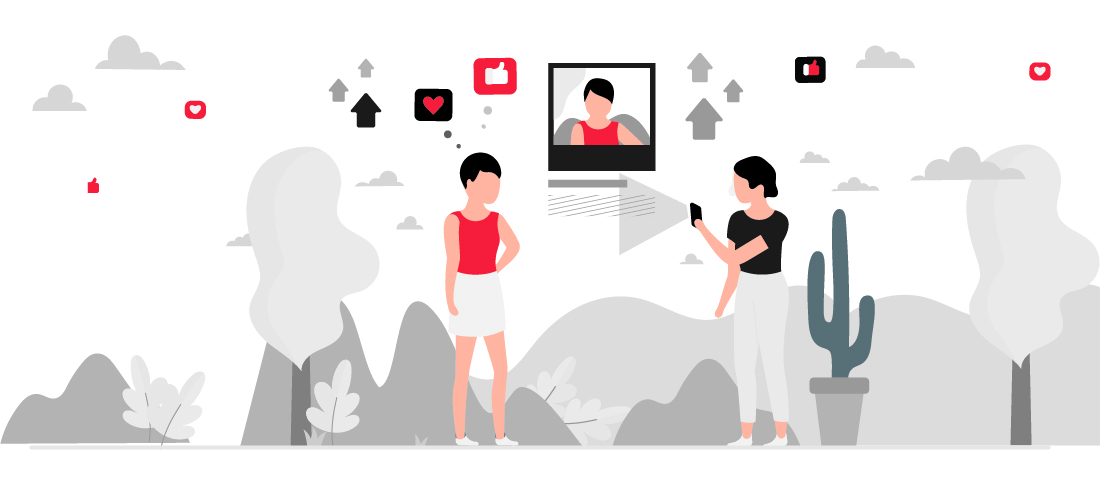Table of Content
- 1. Harnessing the Impact of Influencer Marketing: A Strategic Guide for 2025
- 2. What is Influencer Marketing?
- 3. The Evolution of Influencer Marketing
- 4. Benefits of Influencer Marketing
- 5. Choosing the Right Influencers
- 6. Crafting an Effective Influencer Marketing Strategy
- 7. Best Practices for Influencer Collaborations
- 8. The Future of Influencer Marketing
- 9. Conclusion
A Strategic Guide for 2025
With the rising influence of social media today, influencer marketing has become a powerful tool. It enables brands to promote themselves through people who not only have a trusting social media following but are also the perfect embodiment of authenticity, as the advertising feels more genuine.
At Excellent Publicity, we do influencer marketing a little differently and conduct it with a lot more insight. We understand the impact influencer marketing can have on your brand and work on it with full attention. Influencer marketing may seem very devoted and successful, enabling effortless returns, but as we stress in this guide, it takes a lot of strategic planning, along with following the many benefits it offers, to choose the right influencer to maximize returns.
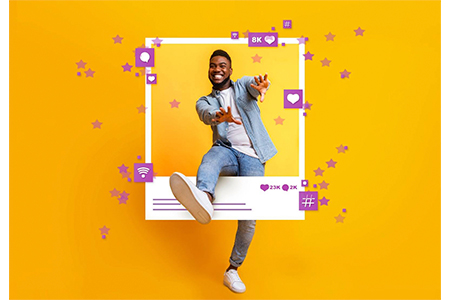
What is Influencer Marketing?
Influencer marketing is an internet marketing tactic that consists of partnerships with people, so-called influencers, whose online presence is significant and can influence the purchasing behavior of their followers. They develop content to present or promote a brand's products or services, thus presenting the brand to their followers in a natural and relevant manner Wikipedia
In contrast to regular advertisements, influencer marketing is predicated on the credibility and familiarity that an influencer has established with his or her following. This confidence is converted into greater engagement and, in most cases, improved conversion rates for the brands.
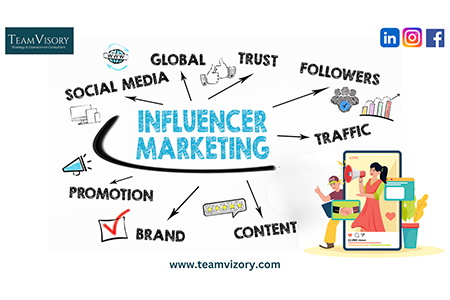
The Evolution of Influencer Marketing
In the beginning, influencer marketing was characterized by celebrity and macro-influencers with massive followings. The trend has now shifted towards a more diversified setting, including micro and nano-influencers who may have smaller followings but higher engagement rates and more niche audiences.The
This evolution has been driven by several factors:Financial Times
Authenticity: Today’s consumers gravitate toward genuine narratives and prefer trusting relatable influencers who recite true incidents from their lives.
Targeted Reach: Brands prefer to partner with nano and micro influencers because the influencers are extremely niche-specific, and hence, the brand can target extremely well-defined audiences.
Cost-Effectiveness: It is cost-effective to collaborate with micro-influencers, especially for small and medium-sized brands, and gives a higher ROI.
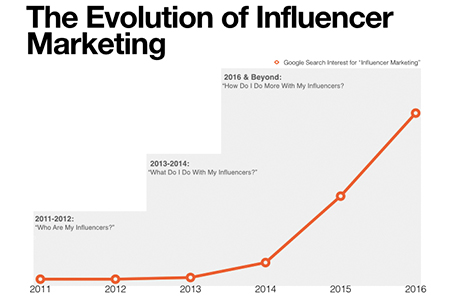
Benefits of Influencer Marketing
Engaging in influencer marketing offers numerous advantages for brands:
- Increased Brand Awareness
Influencer work assists brands in targeting new groups by taking their campaigns outside more conventional methods of advertising. In order to describe this fact, Athletic Greens commissioned the use of the services of TikTok influencers to promote their nutritional supplements, and this action reached over 90 million views on the corresponding hashtags. Dash - Enhanced Credibility and Trust
Influencers have built trust amongst followers. Their product endorsement usually has more weight compared to a conventional advertisement, resulting in increased conversion. - Improved Engagement Rates
To illustrate, micro-influencers on Instagram have an average engagement rate of 3.86 percent, versus an average engagement rate of around 1 percent on brand accounts on Instagram. - Cost-Effective Marketing
Influencer marketing might be profitable than traditional advertising ways. In one case, companies will be able to earn a 4.87 ROI on their investment in influencer marketing at $1.
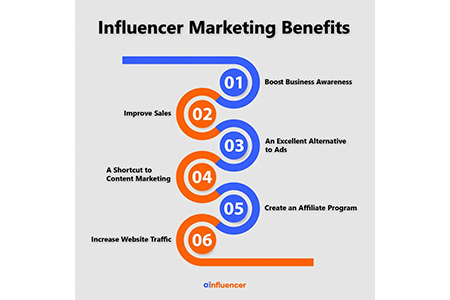
Crafting an Effective Influencer Marketing Strategy
To harness the full potential of influencer marketing, brands should consider the following steps:
- Define Clear Objectives
When brands leverage influencers, they expand their audience to new groups outside the traditional advertising realms. For instance, Athletic Greens employed TikTok influencers as a marketing platform for their health supplements and gained over 90 million views through their respective hashtags. - Identify the Right Influencers
Influencers have built credibility with their audience. Whenever they promote a brand, it tends to be more influential than a normal advertisement, which makes for a greater conversion rate. - Develop Compelling Content
For instance, Instagram micro-influencers have an average engagement rate of 3.86%, while brand accounts register ~1% . - Monitor and Measure Performance
Influencer marketing can generate a greater return on investment than other forms of advertising. For instance, companies can get an ROI of $4.87 for each $1 in influencer marketing spent.

Choosing the Right Influencers
For instance, a local gym trainer with 5,000 active followers can be considered a nano-influencer, whereas a YouTuber with 500,000 subscribers can be a macro-influencer.
We need to choose the right influencers for the success of your campaign. The following ones need to be considered:
Nano-Influencers: They generally have 1K–10K followers. They engage the most and are best suited for niche-based audiences.
Micro-Influencers: They possess a niche group of 10K–100K and may offer more specific reach.
Macro-Influencers: Having 100K–1M followers, they will provide wider reach but are pricey.
Mega-Influencers: Celebrities with more than 1M followers. Although they will provide a wide reach, their engagement rates can be negligible. Marketing Signal Lab
You have to choose influencers whose audience demographics align with your target audience and whose values are aligned with your brand.

Best Practices for Influencer Collaborations
To ensure successful partnerships:
Maintain Authenticity: Giving the influencers a certain amount of creative freedom to market your product in a manner they think will attract their audience the most.
Set Clear Expectations: state what is to be provided and when and how it will be paid and avoid confusion.
Foster Long-Term Relationships: Developing long-term relationships may facilitate more genuine endorsements and brand loyalty in the long run.

The Future of Influencer Marketing
Each development of the internet gives more tasks to influencer marketing.
AI-Generated Content: Brand influencers are trying to promote their campaigns with AI content, which increases sales.
Virtual Influencers: The rise in AI-personas gives brands fresh, creative methods to partner.
Platform Diversification: Influencers are spreading their reach by coming on new social media platforms.
Using the most recent influencer marketing campaign trends is necessary for proper execution.

Conclusion
Influencer marketing has been an effective promotional strategy for businesses who desire to grow their online visibility and engage with their audience on a more personal level. Companies can make use of this process in order to be able to accomplish marketing goals with knowledge of its nature and proper application of strategies.
We have the expertise here at Excellent Publicity, to create customized influencer marketing campaigns to meet your brand requirements. Our expertise guarantees partnerships that deliver value and are measurable.
Harness the power of influencer marketing to enhance your brand’s visibility. Access our influencer marketing services to accelerate your progress and join the conversation.
Explore our influencer marketing services and discover how we can assist you in identifying the influencers best suited to amplify your brand’s message.
Frequently Asked Questions (FAQ) About Influencer Marketing
Influencer marketing is a strategy that requires cooperation with a person, known as an influencer, who is immensely popular on the Internet and can affect the shopping behavior of his followers. Such influencers create content to advertise goods or services in a way that resonates with the audience and is relatable.
The following should also be taken into consideration when selecting an influencer: Audience Demographics: Confirm that the followers of the influencer are similar to your target audience in terms of interest and profile. Engagement Rate: Only target influencers with significant audience engagement rates in regards to likes, comments, and shares. Content Alignment: The work of Annie and her team should be an addition to your brand values and image. Niche Focus: Micro and nano-influencers like to focus on very niche areas and offer very targeted exposure.
It has a lot of other types of influencers that you can collaborate with. Nano-Influencers: 1K-10K fans. Most fit in small niches that are highly interactive. Micro-Influencers: 100K-10K. Give greater directional exposure and contact. Macro-Influencers: 100K-1M fans. Offer low exposure at premium price. Mega-Influencers: More than 1M followers, the huge majority of them are celebrities. Give it lots of exposure, but less engagement.
The price of influencer marketing will differ according to the size of the influencer's following, the platform, and the nature of the campaign. Nano and micro-influencers tend to be cheaper compared to macro and mega-influencers, who can charge more. Nonetheless, influencer marketing can typically have a greater payback on investment (ROI) than traditional advertising.
Of the best advantages we have: Increased Brand Recognition: You can contact a wider more niche audience. Trust and Credibility: This is because Inflencers have earned the trust of their followers, and it is very easy to connect with them and convert. More Interaction: The Inflencer posts get more likes, shares and comments as compared to ordinary brand posts. Low cost: Micro and nano influencers are highly ROI when it comes to influencer marketing.
Key performance indicators (KPIs) in terms of quantifying success are: Engagement Rate: Likes, comments and shares amongst other interactions with posts. Website Traffic: This is a measurement of the amount of traffic that is being sent to your site as a result of influencer updates. Conversion rate: It is measured by the purchases or any other desirable acts that happen as a result of the campaign. Brand Sentiment: How does the customer feel and think about your brand pre-campaign, during the campaign, and after the campaign?
Absolutely! Small influencers can provide very good outputs, particularly when the budget is small. They are less expensive and result oriented. This implies that even with a small budget, small businesses can actually leverage influencer marketing as long as they have an appropriate strategy in place.
To make it real: You should not micro-manage the way products get promoted, but leave influencers to use their creative abilities to make the product seem natural to your viewers. Collaborate with influencers that have a well-known and reputable brand. In order to receive more natural and organic mentions, develop long-term relationships with influencers.


